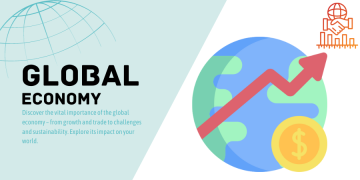Introduction
In recent years, ESG investing has garnered significant attention, rapidly transforming from a niche strategy to a mainstream investment approach. The rise of Environmental, Social, and Governance (ESG) factors in investment decisions is part of a larger global shift towards greater social responsibility, sustainability, and ethical practices. ESG investing involves selecting investments based on their performance in three key areas: environmental impact, social responsibility, and governance structures. In this context, ESG is seen as a way to align financial returns with values such as climate sustainability, fair labor practices, and ethical business leadership.
However, as the ESG movement grows in influence and popularity, questions arise about its long-term viability. Some critics argue that ESG investing is nothing more than a passing trend—a passing wave of popularity that will eventually lose its relevance as market conditions shift. Others believe that ESG investing represents a profound and lasting shift in the way financial markets operate, with the potential to reshape entire industries and redefine business practices globally. In the face of such contrasting opinions, the critical question remains: Is ESG investing a sustainable trend, or is it just a passing fad?
This essay seeks to explore this question by examining the key components of ESG investing, the factors driving its growth, the arguments for and against its sustainability, and the role of government and regulation in shaping the future of ESG investing. By analyzing case studies, market data, and expert opinions, we will attempt to arrive at a balanced perspective on the future of ESG investing, assessing whether it represents a true transformation of investment practices or if it is merely a short-term fad driven by consumer pressure and regulatory trends.
What is ESG Investing?
ESG investing refers to the integration of Environmental, Social, and Governance factors into investment analysis and decision-making processes. It is grounded in the belief that companies that perform well on these factors are more likely to deliver long-term financial returns and mitigate potential risks. Each of the three components of ESG plays a unique role:
- Environmental: This factor assesses a company’s environmental impact, including its carbon footprint, waste management, water usage, and efforts to address climate change. Companies that are proactive in reducing environmental harm and adopting sustainable practices are often considered more attractive to ESG investors. For instance, renewable energy companies or businesses with strong environmental conservation policies are likely to receive higher ESG ratings.
- Social: The social aspect focuses on how a company manages relationships with employees, suppliers, customers, and the communities in which it operates. Factors such as fair labor practices, diversity and inclusion policies, employee welfare, and corporate social responsibility (CSR) initiatives fall under this category. Companies with strong social policies are typically seen as more sustainable in the long term because they build trust with stakeholders and avoid reputational risks.
- Governance: Governance refers to the structures and practices that guide a company’s decision-making. This includes the composition of its board, executive compensation, shareholder rights, and transparency in financial reporting. Companies with strong governance practices are typically better managed, with lower risks of corruption or poor management decisions, making them more appealing to ESG investors.
ESG investing is often used interchangeably with terms like socially responsible investing (SRI) or sustainable investing. However, ESG investing tends to focus more on using data-driven approaches to assess corporate behavior, while SRI historically emphasized screening out companies based on specific moral or ethical criteria.

The History and Evolution of ESG Investing
The concept of ESG investing emerged from socially responsible investing (SRI), which gained traction in the 1960s and 1970s in response to growing public concerns over issues like racial discrimination, labor rights, and environmental protection. SRI was largely driven by individuals who wanted to align their investments with their ethical beliefs. In its early days, SRI was mainly focused on excluding certain industries—such as tobacco, alcohol, and firearms—based on their perceived negative impact on society.
As environmental and social concerns continued to grow throughout the late 20th century, the focus of SRI gradually shifted from exclusionary practices to a more proactive approach—one that encourages positive contributions to environmental and social causes. The term “ESG” first appeared in the 2004 United Nations’ report, “Who Cares Wins,” which argued that integrating ESG factors into financial analysis could enhance risk management and create long-term value for investors. Since then, ESG investing has evolved from a niche practice into a key component of global financial markets.
Today, ESG investing is supported by a variety of global initiatives, including the UN’s Principles for Responsible Investment (PRI), the Global Reporting Initiative (GRI), and the Task Force on Climate-related Financial Disclosures (TCFD). These organizations have worked to standardize ESG reporting and make it easier for investors to access reliable ESG data.
The Rise of ESG Investing
The rise of ESG investing can be attributed to several key factors, including growing awareness of climate change, increased demand for corporate accountability, and changing investor preferences. Over the past two decades, a combination of global events, regulatory changes, and social movements has helped propel ESG investing into the spotlight.
- Climate Change and Environmental Concerns: The growing urgency of addressing climate change has been one of the most significant drivers of ESG investing. As concerns over global warming, carbon emissions, and environmental degradation have intensified, investors have increasingly sought out companies that are taking steps to reduce their environmental impact. The Paris Agreement, signed in 2015, has played a pivotal role in setting global climate targets, and governments around the world have begun to implement policies aimed at achieving these targets.
- Social Justice Movements: Over the past few years, social justice movements such as #MeToo, Black Lives Matter, and campaigns for better labor rights have forced companies to rethink their policies on diversity, equity, and inclusion. Investors are increasingly aware that companies that foster positive social change are not only better for society but also more likely to mitigate reputational and operational risks.
- Millennial and Gen Z Investors: Younger generations are often more socially and environmentally conscious, and they are influencing market trends by demanding that companies act responsibly. Studies have shown that millennials and Gen Z investors are more likely to prioritize ESG factors in their investment decisions, leading to a surge in ESG-focused investment products, such as mutual funds and exchange-traded funds (ETFs).
Arguments for ESG Investing as a Sustainable Trend
Supporters of ESG investing argue that it is more than just a passing trend and that it is a sustainable, long-term shift in financial markets. There are several key reasons why ESG investing is seen as a sustainable trend:
- Long-Term Risk Mitigation: ESG factors can serve as key indicators of a company’s long-term sustainability. For example, companies with strong environmental practices are better positioned to manage regulatory changes related to climate policy. Similarly, companies with robust governance structures are less likely to experience scandals or financial mismanagement. By investing in ESG companies, investors may mitigate long-term risks, making it a sound financial strategy.
- Consumer and Investor Demand: The growing consumer demand for sustainable and ethical products has pushed companies to adopt ESG principles. Investors are also increasingly looking for ESG-focused investments. In fact, data shows that ESG funds have seen significant growth in recent years, with record inflows into ESG investment vehicles. This surge in demand is likely to continue as younger generations of investors take a more active role in the market.
Conclusion
As we have explored in this essay, ESG investing has evolved from a niche practice to a dominant force in financial markets. While critics question its long-term sustainability, there are compelling reasons to believe that ESG investing is more than just a passing fad. With growing demand from consumers, investors, and regulators, ESG principles are becoming embedded in the fabric of corporate strategy. While challenges remain in terms of standardizing metrics and ensuring transparency, the momentum behind ESG investing suggests that it will continue to grow and shape the future of investing.
The coming decades will likely determine whether ESG investing is a sustainable trend or merely a passing phase, but one thing is clear: ESG factors are already reshaping the way we think about risk, value, and corporate responsibility.



































